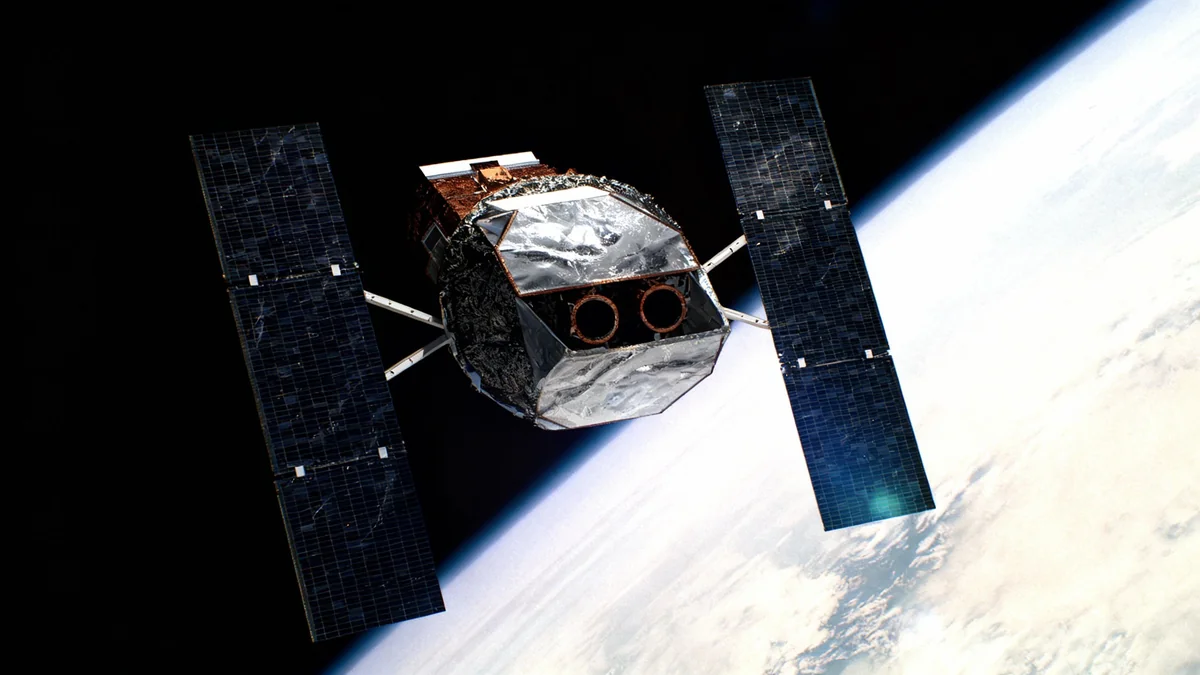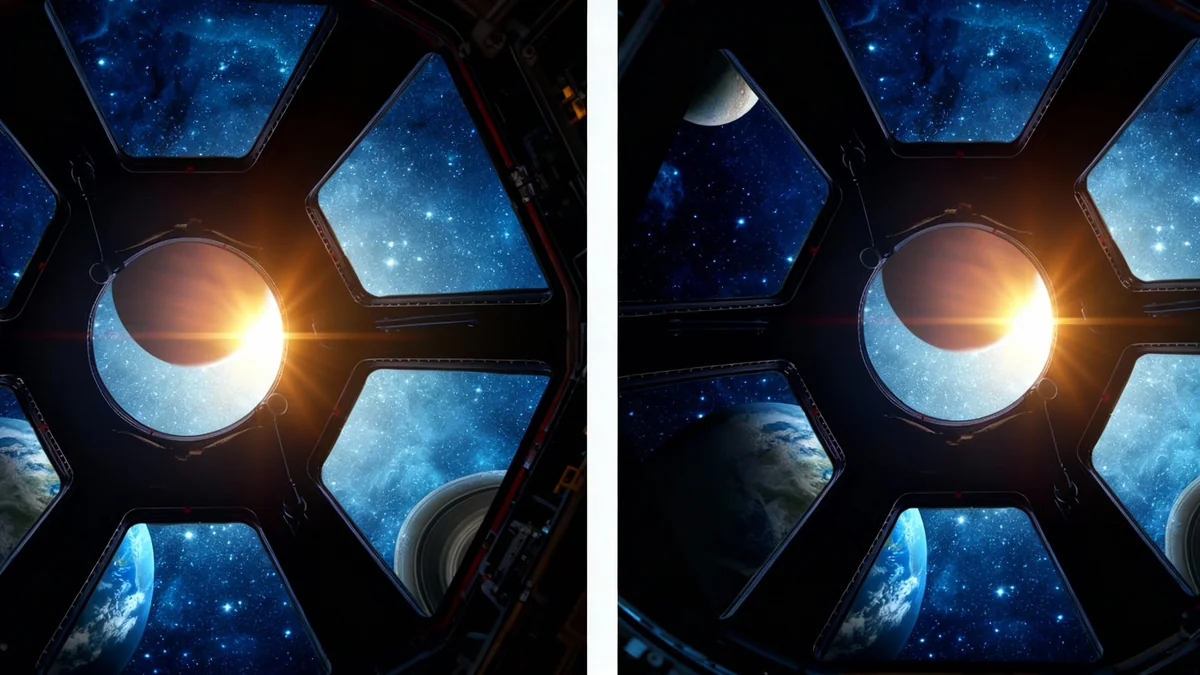Iran has officially shifted its space program from experimental launches to providing practical satellite services, according to the head of the country's Space Research Institute. The announcement follows the successful deployment of the domestically-built Nahid-2 communications satellite and the completion of the first satellite phone call through the new system.
Vahid Yazdanian, the institute's director, confirmed that the Nahid-2 satellite is now in a stable 500-kilometer orbit. This development marks a significant step for Iran's ambitions to achieve full independence in its space industry, from design and manufacturing to launch and operation.
Key Takeaways
- Iran's space program has transitioned from a development phase to a service-oriented era.
- The domestically produced Nahid-2 satellite successfully made its first satellite phone call from a 500km orbit.
- Future plans include launching more advanced satellites like Pars-1 and developing a domestic navigation system.
- The government is encouraging private sector involvement to commercialize satellite data for various industries.
- Iran is expanding international space cooperation with Russia, China, and several regional partners.
From Test Launches to Functional Services
The head of Iran's Space Research Institute, Vahid Yazdanian, has declared the start of the country's “satellite services era.” This move signals a strategic change from what he described as “launching for the sake of launching” to “launching for service.” The goal is to leverage space technology for tangible economic and social benefits.
This new phase was inaugurated by the successful operation of the Nahid-2 communications satellite. According to Yazdanian, the first satellite phone call involved sending and receiving messages using Store & Forward technology, a method for handling communications in non-continuous coverage areas. The test also utilized the KU band for telephony relay, demonstrating the satellite's functional capabilities.
“We have moved beyond the phase of ‘launching for the sake of launching’ and entered the stage of ‘launching for service,’” Yazdanian stated, highlighting the program's new practical focus.
The emphasis is now on creating a sustainable space ecosystem that can support various sectors within Iran. This includes providing data and connectivity for industries ranging from agriculture to urban planning.
An Ambitious Satellite Launch Schedule
Iran has outlined a detailed roadmap for its upcoming space missions, indicating a rapid pace of development. The country plans to launch a second Nahid-2 model and the Pars-1 satellite by the end of December, using a domestically developed launcher.
The Pars-1 is an Earth observation satellite designed for remote sensing, while the Nahid series focuses on communications. These upcoming launches are intended to build upon the success of the first Nahid-2 and expand Iran's orbital capabilities.
Upcoming Satellite Missions
- Second Nahid-2 & Pars-1: Scheduled for launch by the end of December using an indigenous launcher.
- Nahid-3: An upgraded communications satellite currently being designed for placement in a higher, geostationary orbit.
- Pars-3: An advanced Earth observation satellite under design, with a targeted imaging resolution of one meter.
In addition to these primary missions, Iran is developing a series of research satellites, numbered Research-1 to Research-5. This project involves collaboration with universities and knowledge-based companies to test and localize various space subsystems. The launch of this research constellation is anticipated by the end of next year.
Developing a Domestic Navigation System
One of the most ambitious long-term projects announced is the development of an independent navigation system. Yazdanian confirmed that feasibility studies for this domestic Global Navigation Satellite System (GNSS) have already begun.
The system is projected to become operational within a two to five-year timeframe. The initial constellation will consist of five to six satellites, which officials state will provide positioning accuracy within a few meters. This initiative aims to reduce Iran's reliance on foreign-operated systems like the U.S. Global Positioning System (GPS).
What is a GNSS?
A Global Navigation Satellite System (GNSS) is a constellation of satellites that provides autonomous geo-spatial positioning with global coverage. It allows small electronic receivers to determine their location (longitude, latitude, and altitude/elevation) to high precision. Well-known systems include the USA's GPS, Russia's GLONASS, and Europe's Galileo.
Developing a sovereign navigation system would provide Iran with strategic autonomy for military, civilian, and commercial applications. It represents a significant technological undertaking that requires advanced capabilities in satellite manufacturing, launch, and ground control systems.
Economic Strategy and International Partnerships
The Iranian government is actively working to integrate the private sector into its space industry. Yazdanian emphasized that private companies will be central to the future of the program. The strategy involves transforming raw satellite data into marketable services for key economic sectors.
Key Areas for Commercialization:
- Agriculture: Crop monitoring, yield prediction, and resource management.
- Environmental Monitoring: Tracking deforestation, water resources, and pollution.
- Mining: Geological surveys and resource exploration.
- Urban Management: City planning, infrastructure monitoring, and disaster response.
On the international front, Iran is expanding its space partnerships. Yazdanian mentioned ongoing cooperation with Russia, China, Oman, Turkmenistan, and Armenia. He clarified that Iran's policy is to transfer technical knowledge rather than simply sell finished products, aiming to foster deeper, more collaborative relationships.
Overcoming Challenges and Fostering Innovation
Despite progress, Iran's space program faces significant hurdles, primarily due to international sanctions. Yazdanian acknowledged that sanctions have complicated the procurement of components and led to rising costs. However, he stressed that Iran has responded by strengthening its domestic manufacturing capabilities.
The country now claims to possess the full cycle of satellite production, from design to launch, relying on national expertise. This self-reliance has also spurred innovation in other areas. Technologies developed for the space program are being commercialized for terrestrial use.
These “spin-off” technologies include the production of high-efficiency solar panels, advanced lithium-ion batteries, brushless motors, and durable polymer coatings. These products are now being integrated into other industries, such as transportation and home appliances, creating additional economic value from the investment in space technology.





